Abstract
Two experiments with pigeons examined the relation of the duration of a signal for delay ("delay signal") to rates of key pecking. The first employed a multiple schedule comprised of two components with equal variable-interval 60-s schedules of 27-s delayed food reinforcement. In one component, a short (0.5-s) delay signal, presented immediately following the key peck that began the delay, was increased in duration across phases; in the second component the delay signal initially was equal to the length of the programmed delay (27 s) and was decreased across phases. Response rates prior to delays were an increasing function of delay-signal duration. As the delay signal was decreased in duration, response rates were generally higher than those obtained under identical delay-signal durations as the signal was increased in duration. In Experiment 2 a single variable-interval 60-s schedule of 27-s delayed reinforcement was used. Delay-signal durations were again increased gradually across phases. As in Experiment 1, response rates increased as the delay-signal duration was increased. Following the phase during which the signal lasted the entire delay, shorter delay-signal-duration conditions were introduced abruptly, rather than gradually as in Experiment 1, to determine whether the gradual shortening of the delay signal accounted for the differences observed in response rates under identical delay-signal conditions in Experiment 1. Response rates obtained during the second exposures to the conditions with shorter signals were higher than those observed under identical conditions as the signal duration was increased, as in Experiment 1. In both experiments, rates and patterns of responding during delays varied greatly across subjects and were not systematically related to delay-signal durations. The effects of the delay signal may be related to the signal's role as a discriminative stimulus for adventitiously reinforced intradelay behavior, or the delay signal may have served as a conditioned reinforcer by virtue of the temporal relation between it and presentation of food.
Full text
PDF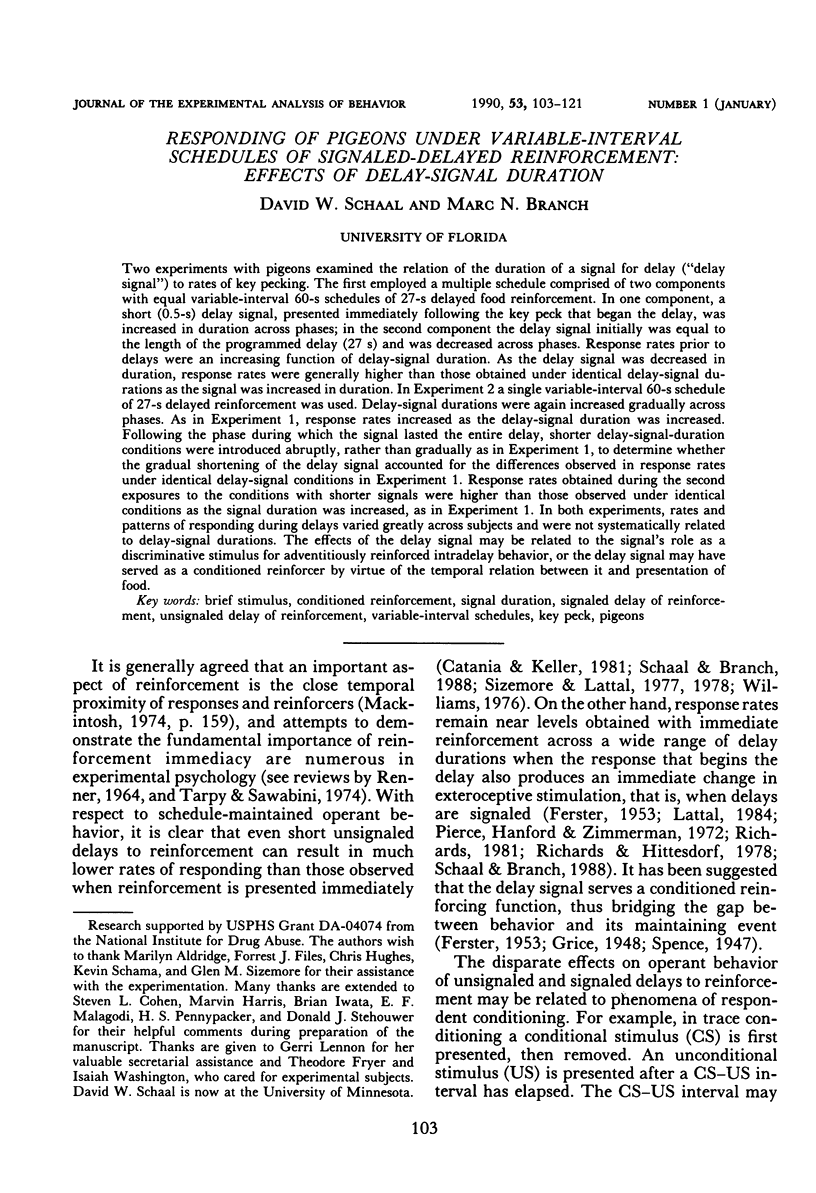
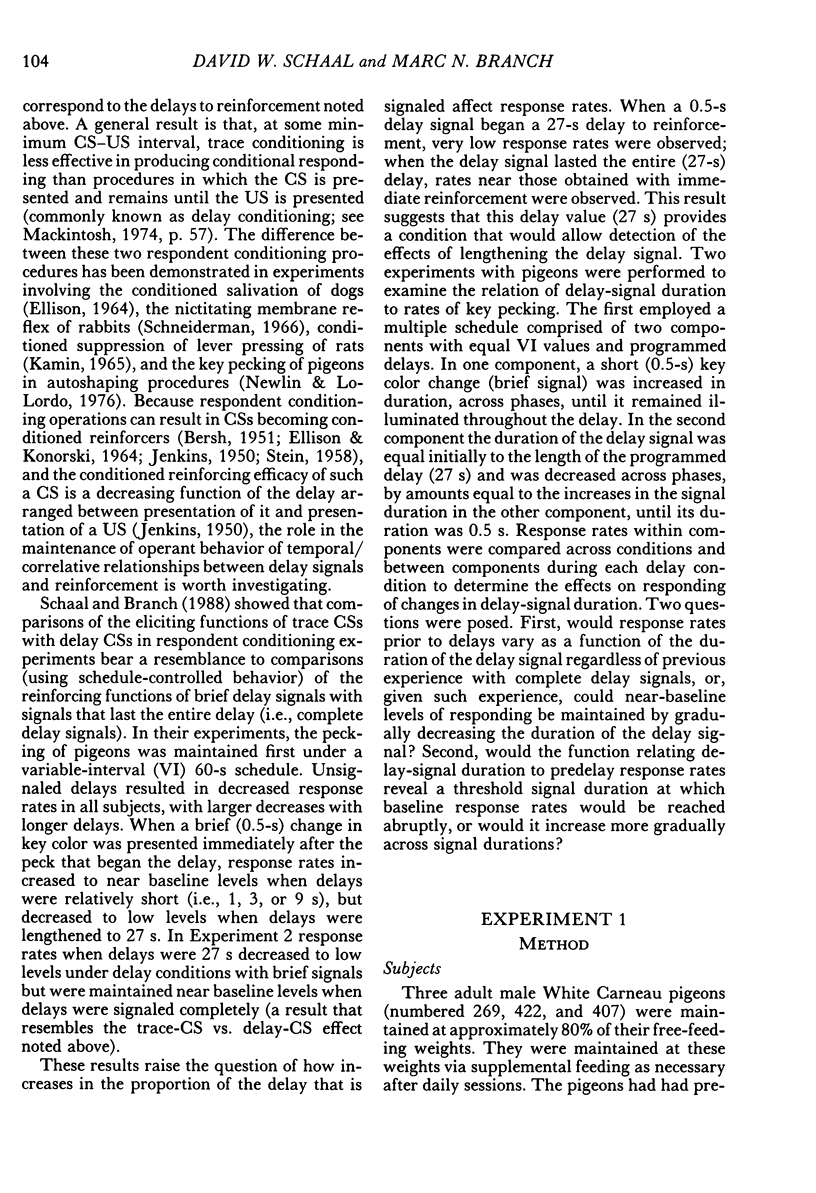
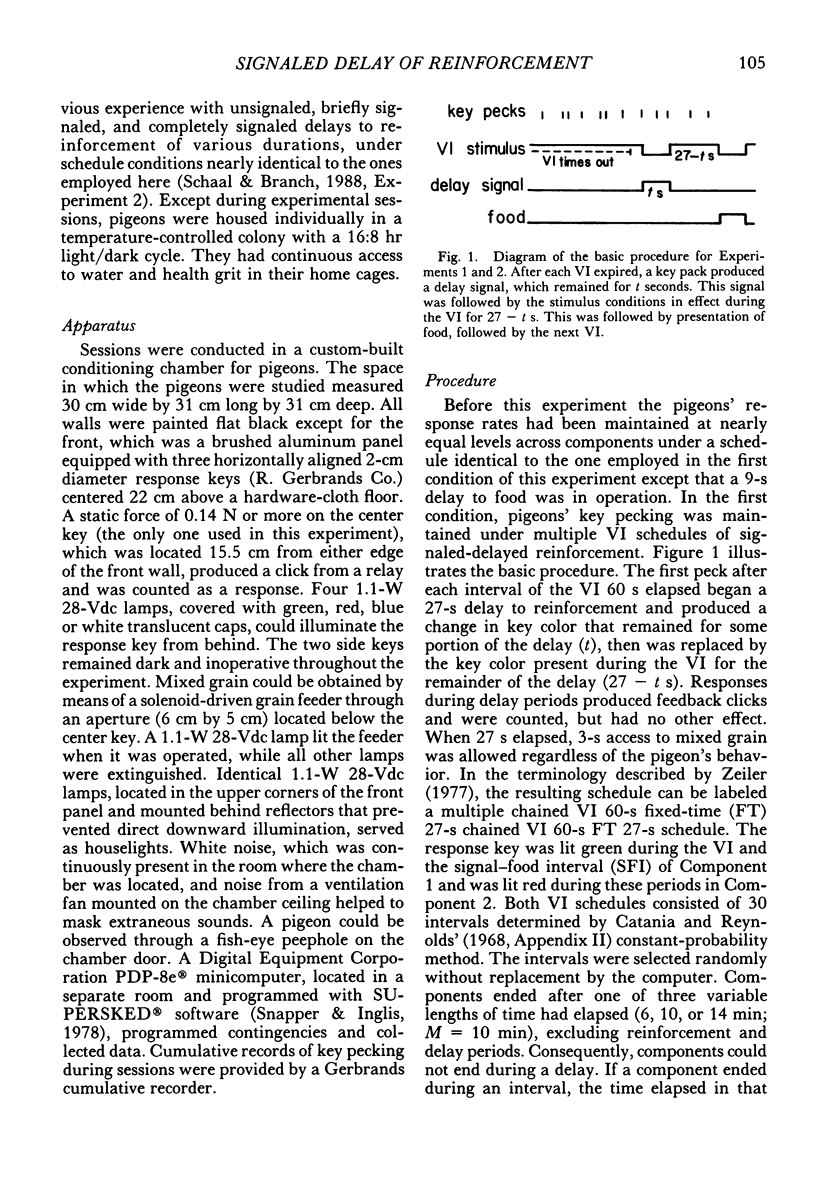
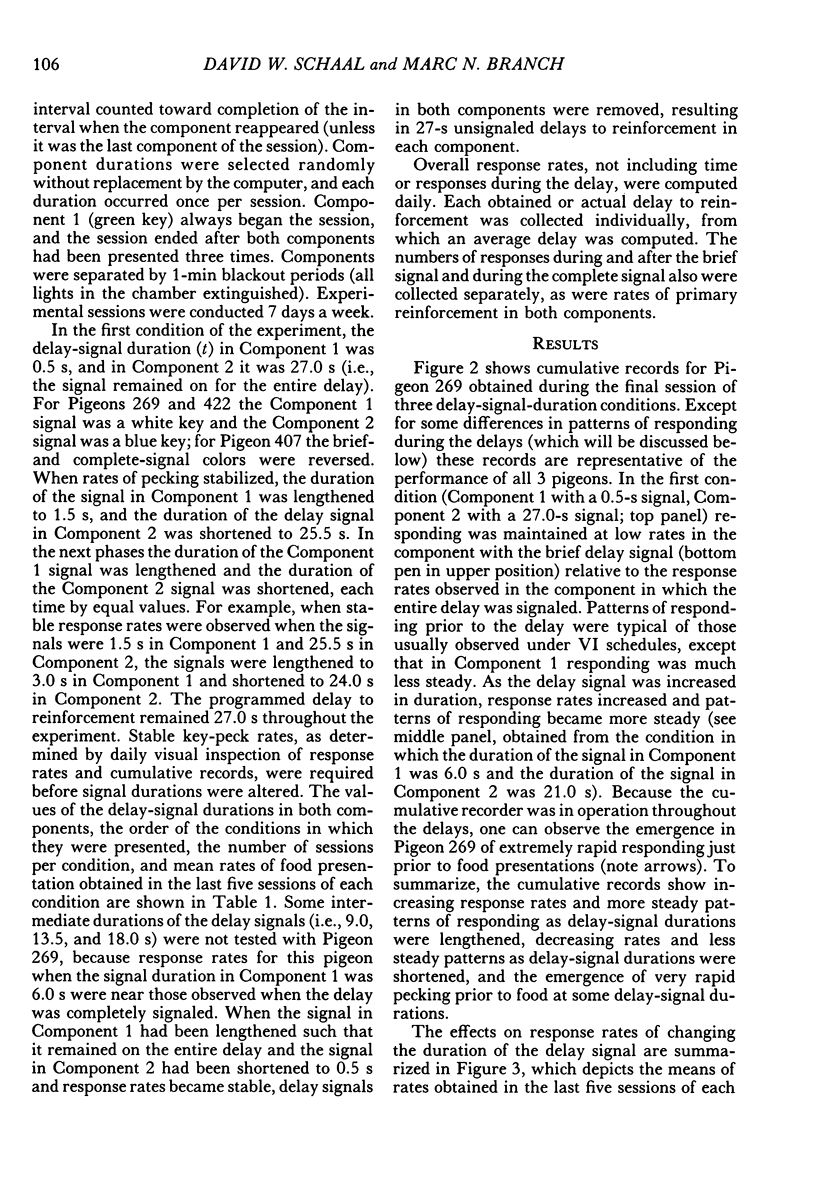
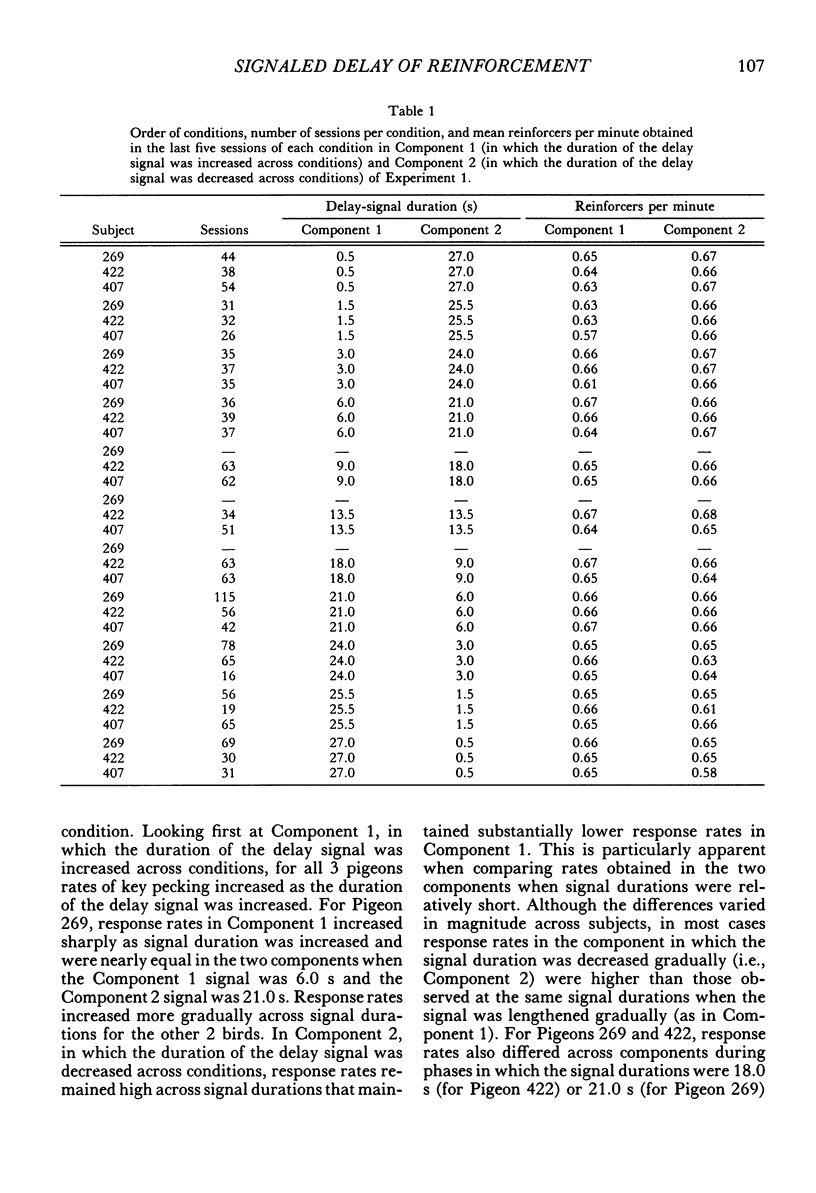
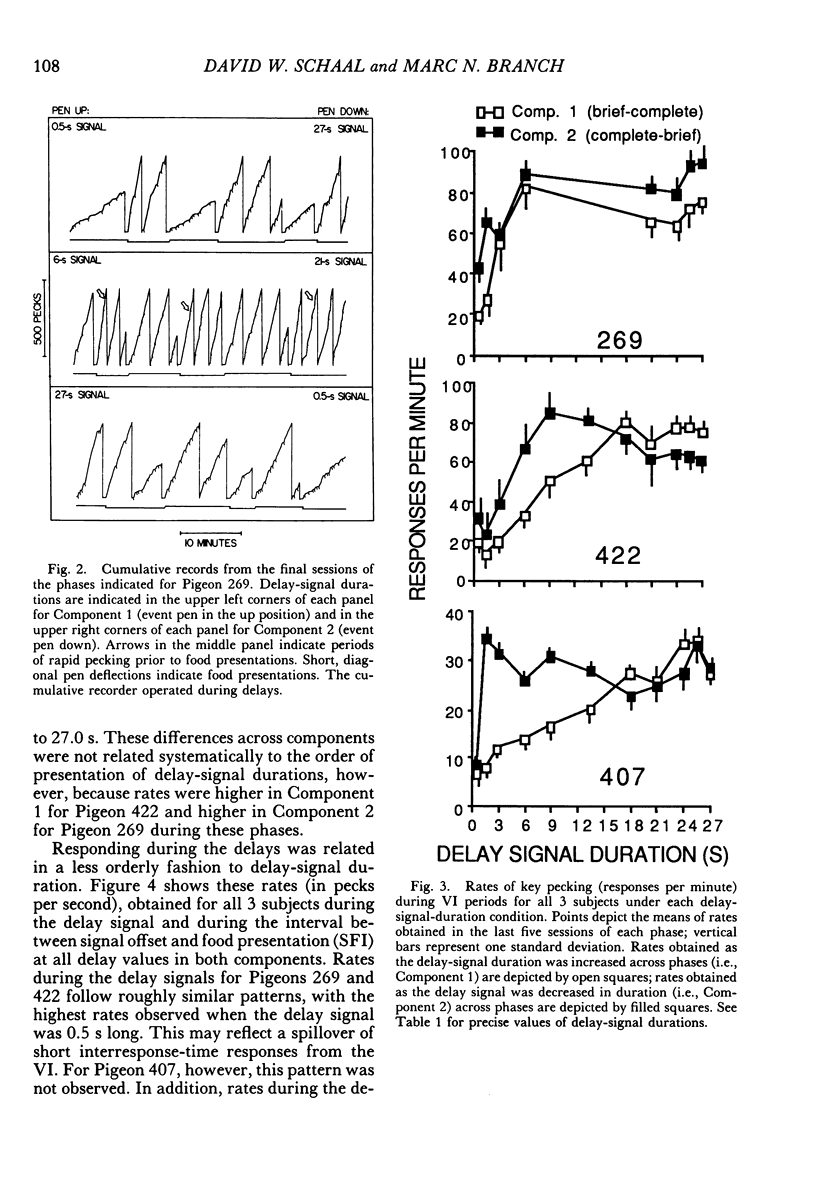
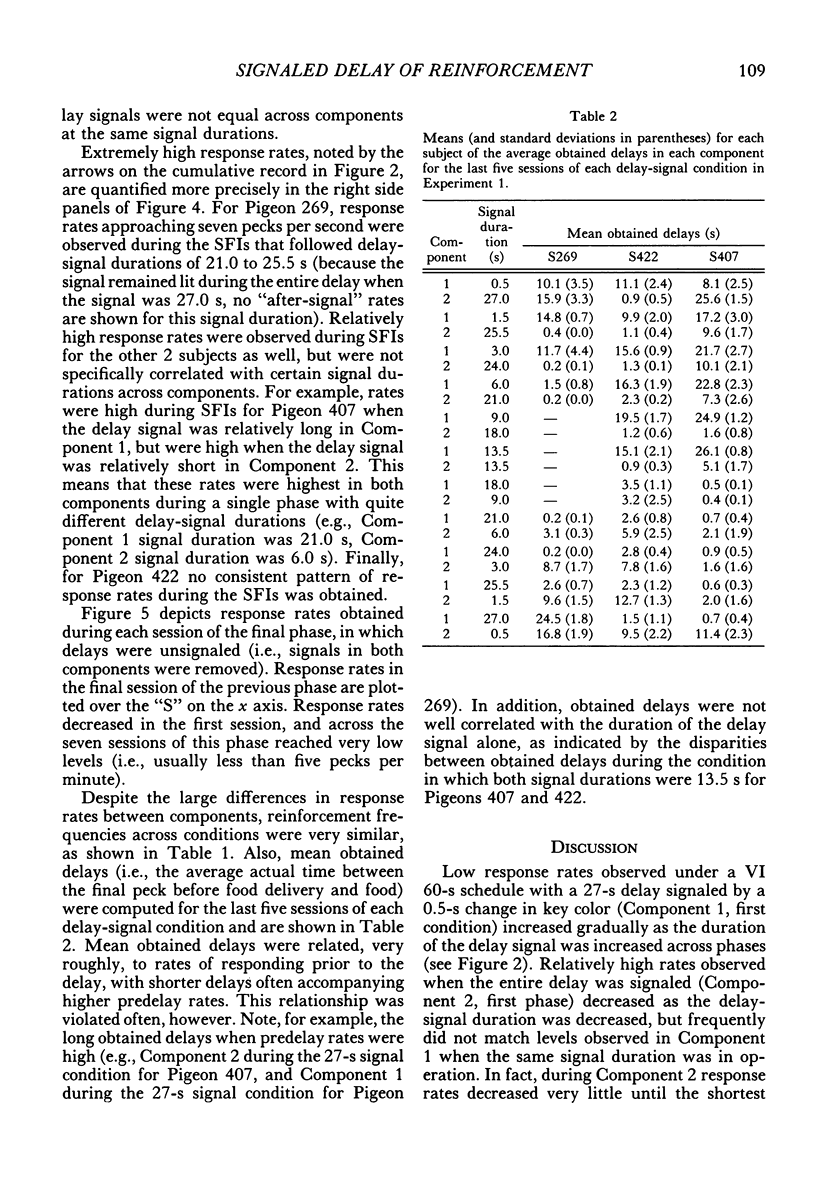
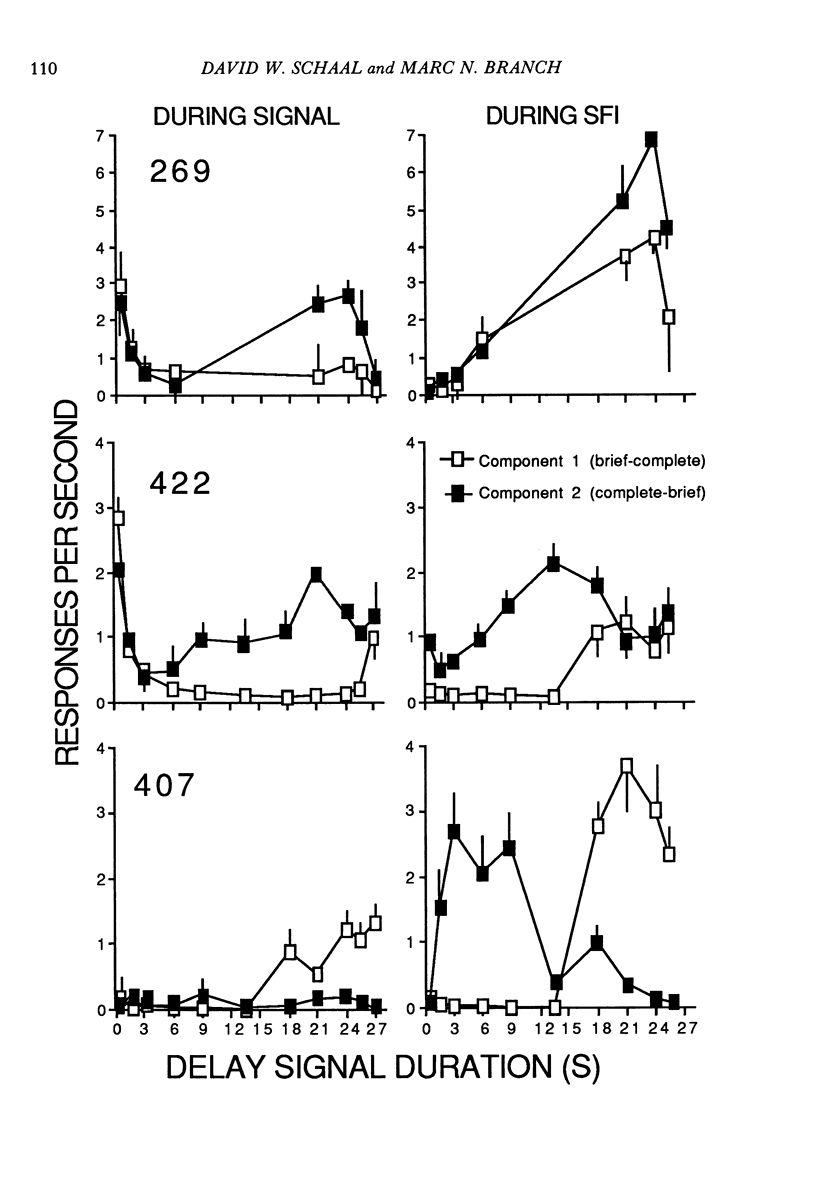
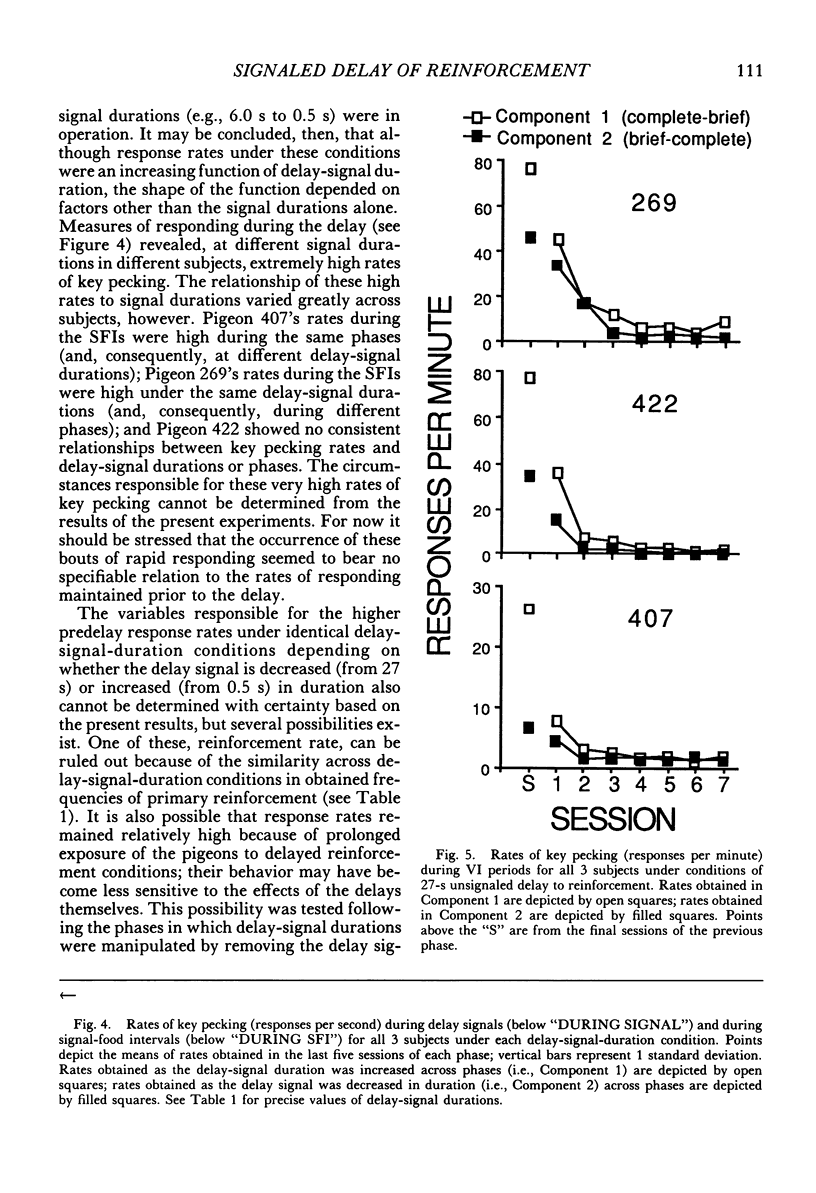
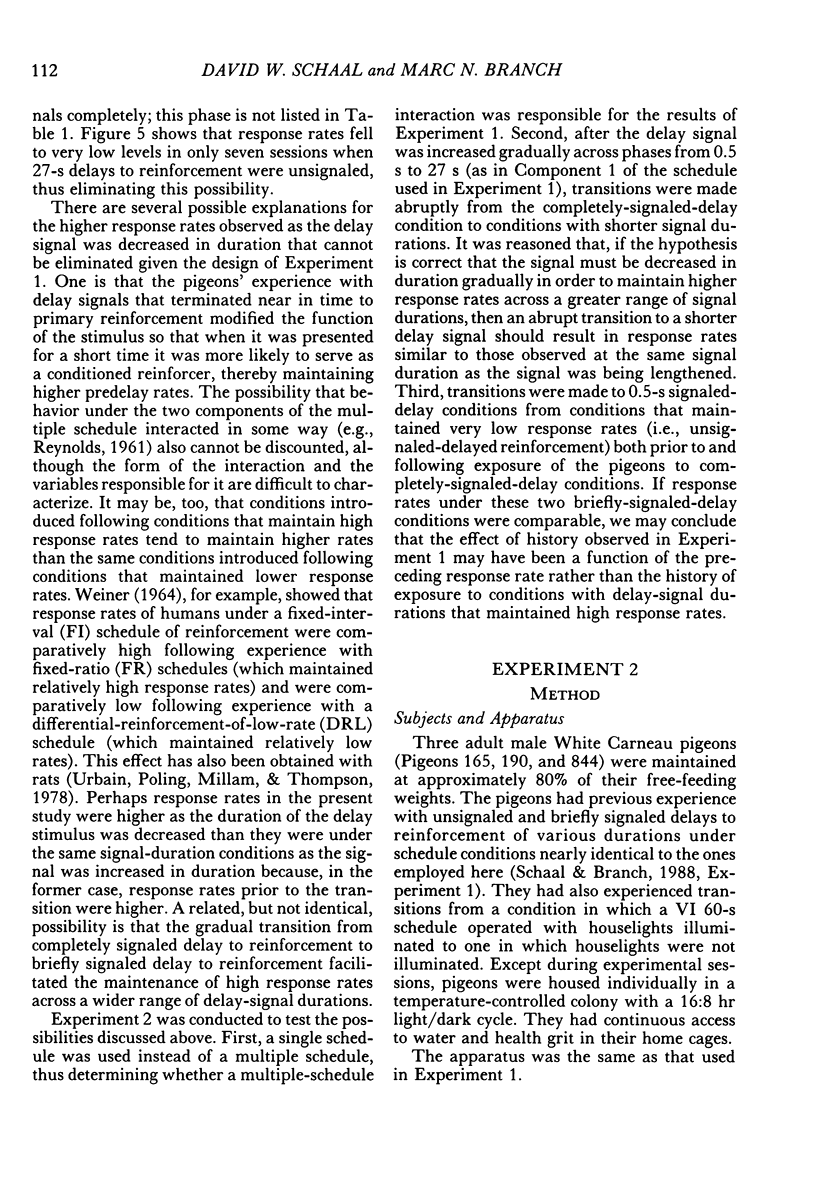
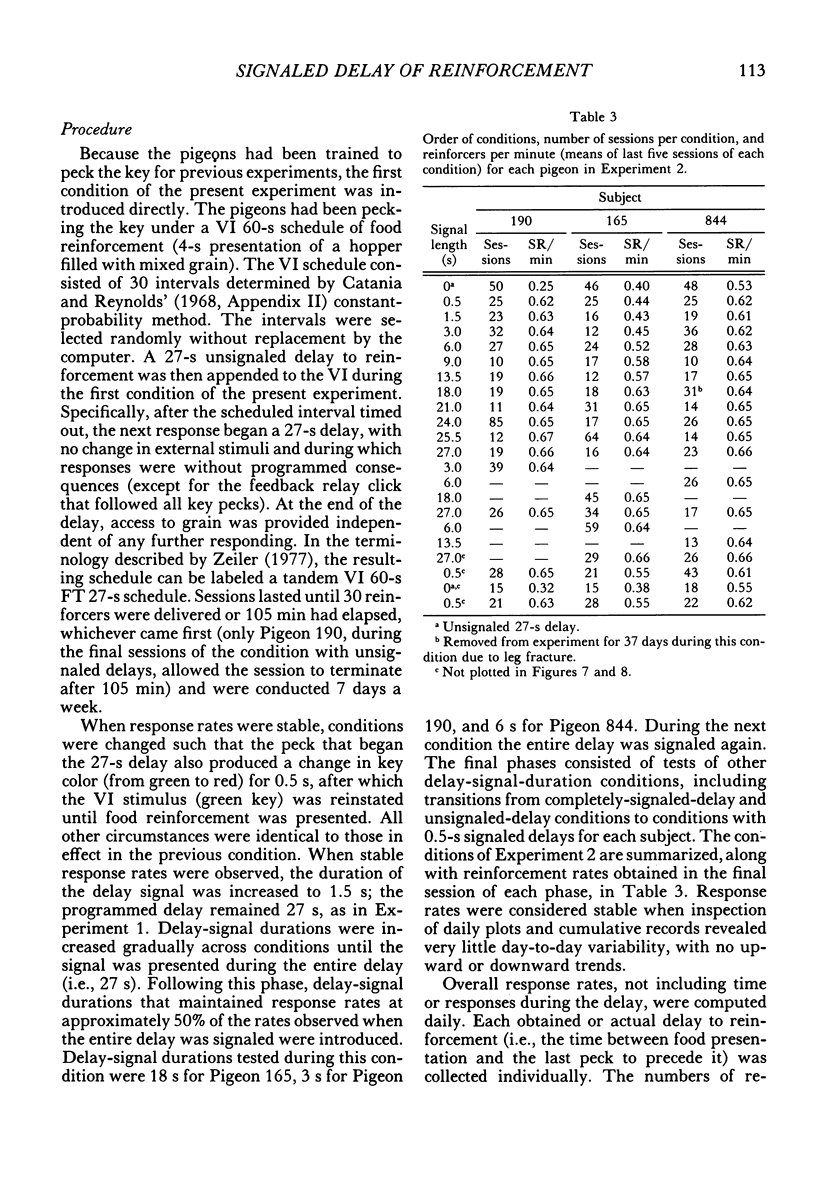
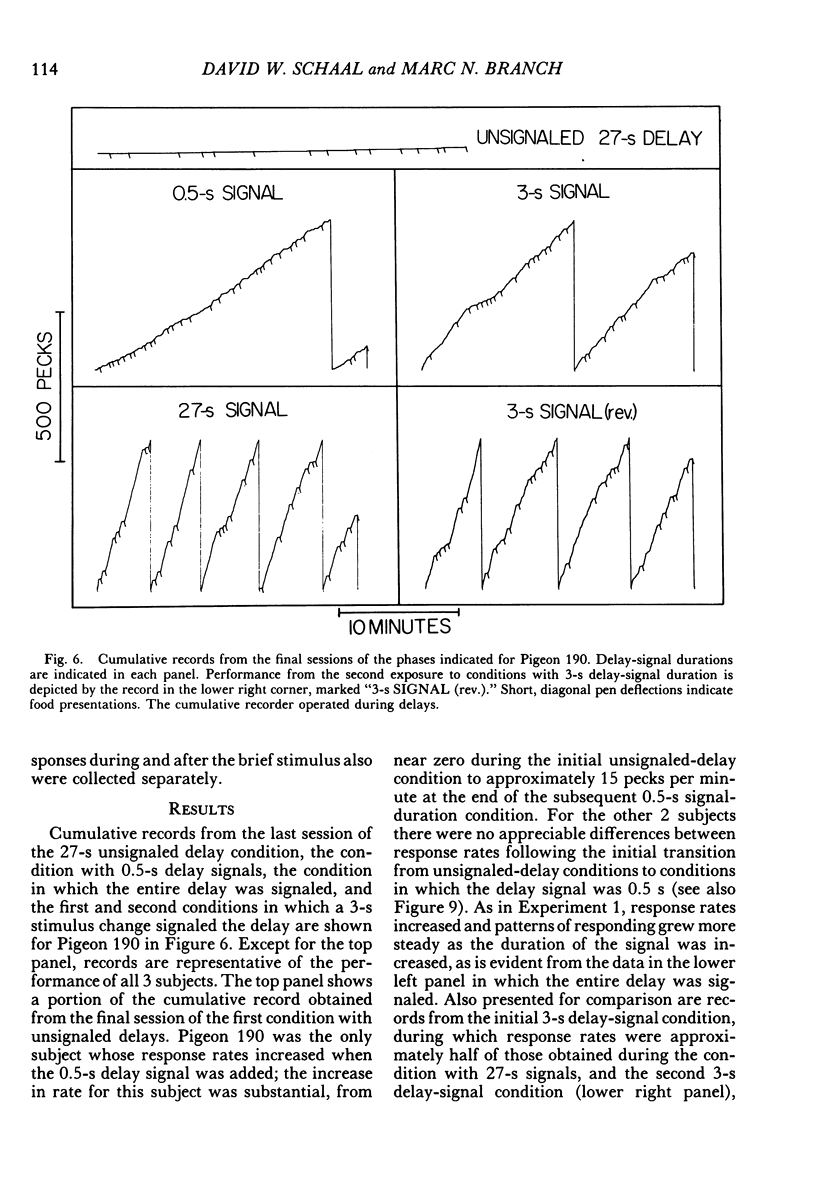

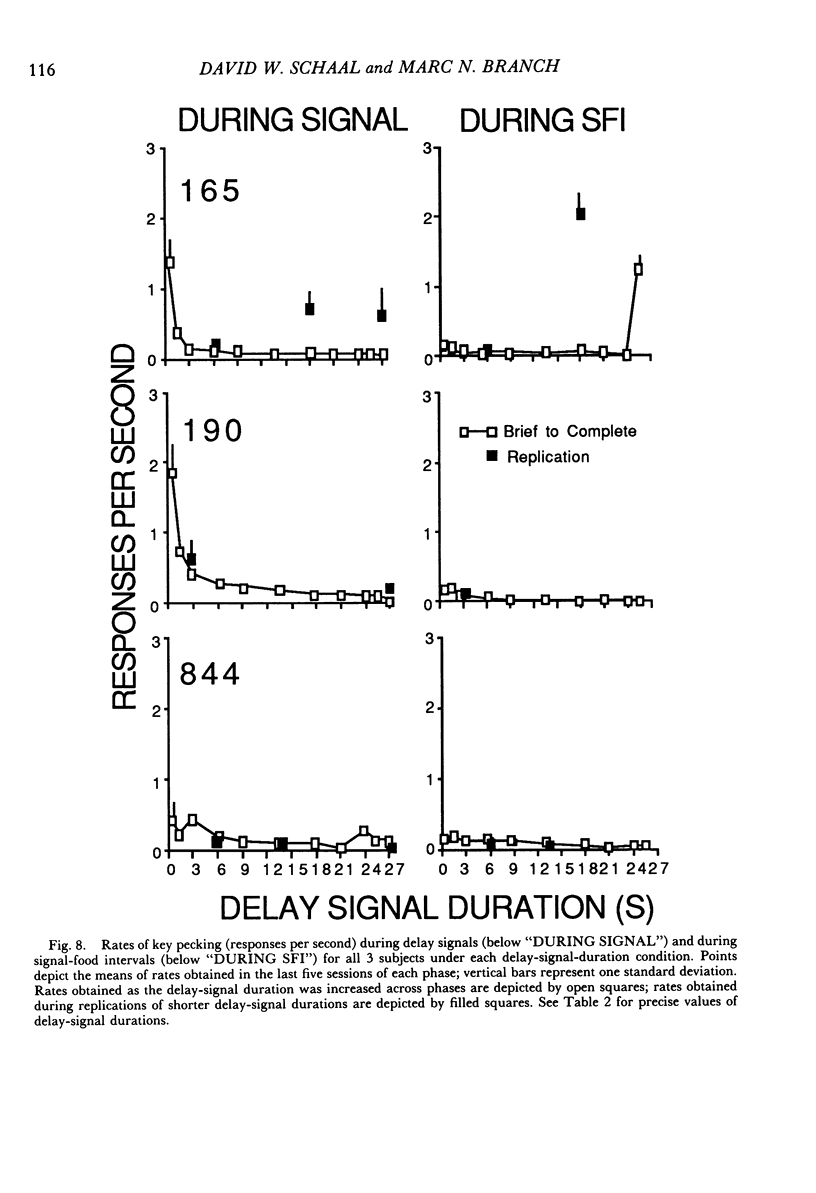
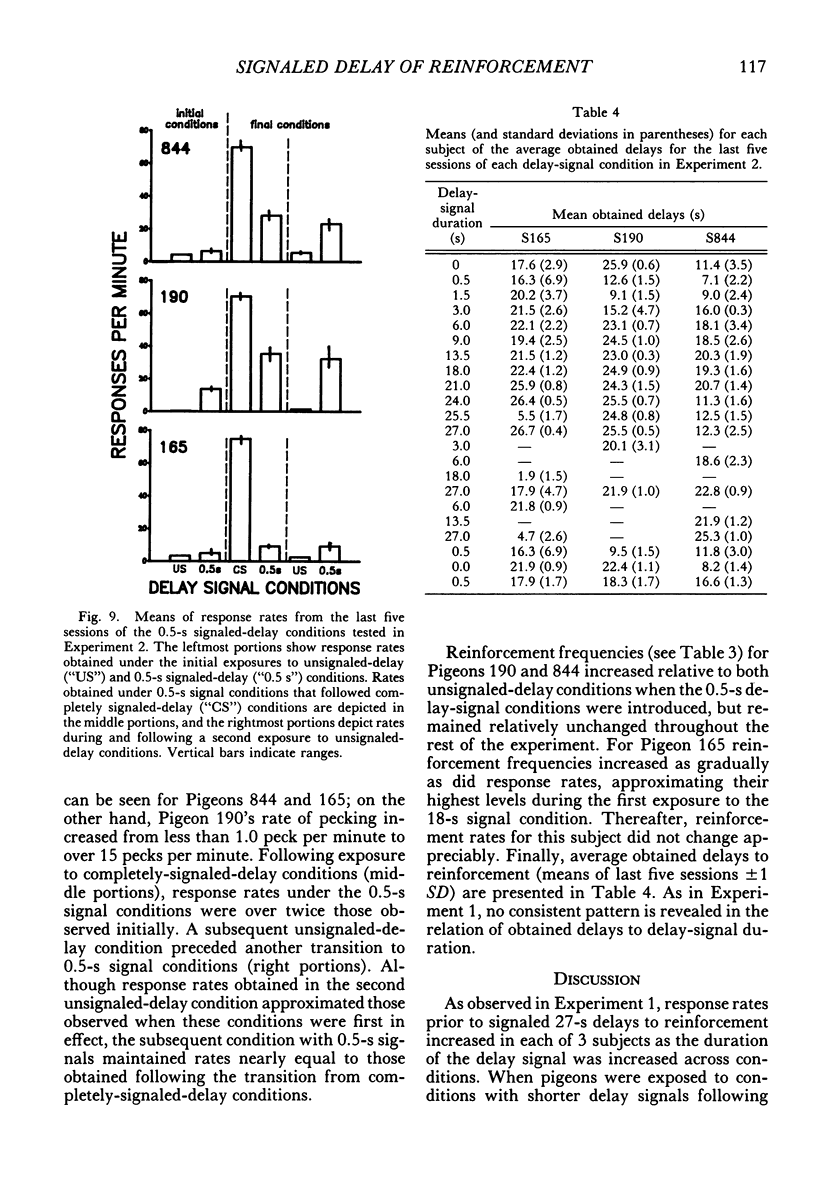
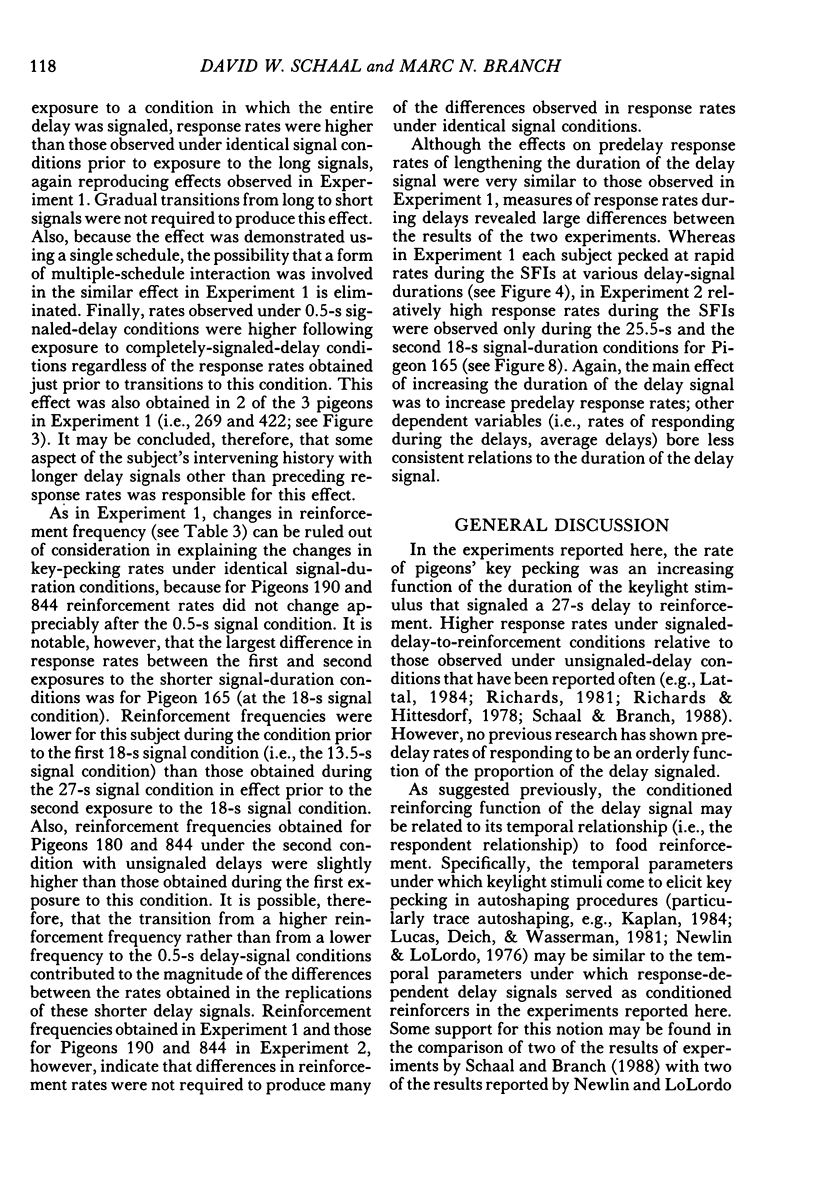
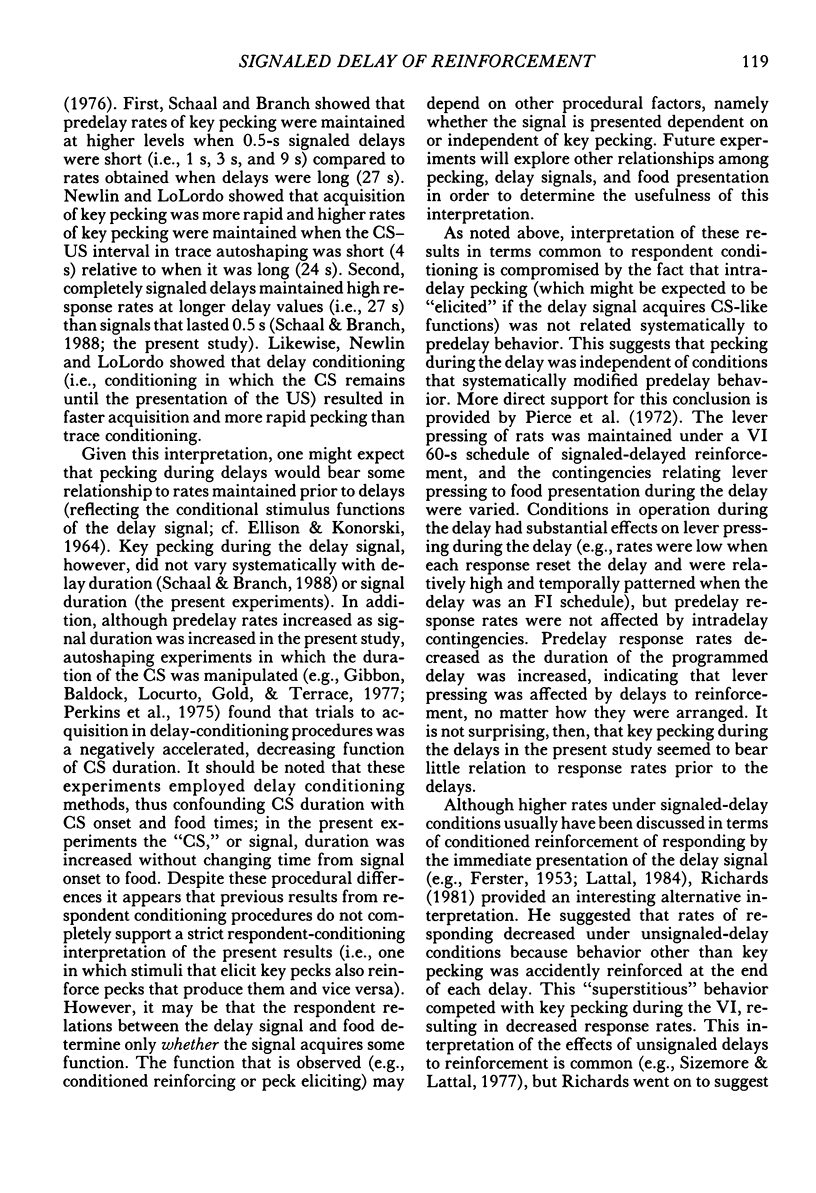
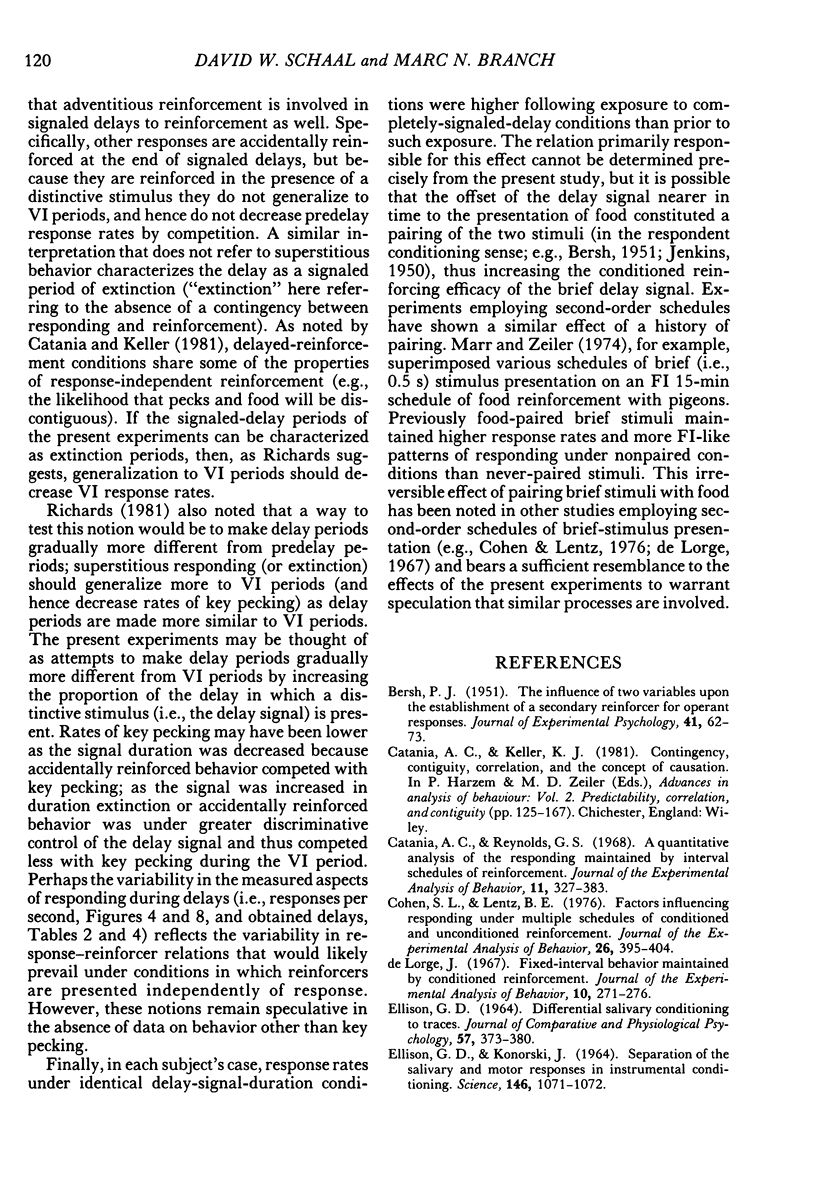

Selected References
These references are in PubMed. This may not be the complete list of references from this article.
- BERSH P. J. The influence of two variables upon the establishment of a secondary reinforcer for operant responses. J Exp Psychol. 1951 Jan;41(1):62–73. doi: 10.1037/h0059386. [DOI] [PubMed] [Google Scholar]
- Catania A. C., Reynolds G. S. A quantitative analysis of the responding maintained by interval schedules of reinforcement. J Exp Anal Behav. 1968 May;11(3 Suppl):327–383. doi: 10.1901/jeab.1968.11-s327. [DOI] [PMC free article] [PubMed] [Google Scholar]
- Cohen S. L., Lentz B. E. Factors influencing responding under multiple schedules of conditioned and unconditioned reinforcement. J Exp Anal Behav. 1976 Nov;26(3):395–404. doi: 10.1901/jeab.1976.26-395. [DOI] [PMC free article] [PubMed] [Google Scholar]
- De Lorge J. Fixed-interval behavior maintained by conditioned reinforcement. J Exp Anal Behav. 1967 May;10(3):271–276. doi: 10.1901/jeab.1967.10-271. [DOI] [PMC free article] [PubMed] [Google Scholar]
- ELLISON G. D. DIFFERENTIAL SALIVARY CONDITIONING TO TRACES. J Comp Physiol Psychol. 1964 Jun;57:373–380. doi: 10.1037/h0046267. [DOI] [PubMed] [Google Scholar]
- ELLISON G. D., KONORSKI J. SEPARATION OF THE SALIVARY AND MOTOR RESPONSES IN INSTRUMENTAL CONDITIONING. Science. 1964 Nov 20;146(3647):1071–1072. doi: 10.1126/science.146.3647.1071. [DOI] [PubMed] [Google Scholar]
- FERSTER C. B. Sustained behavior under delayed reinforcement. J Exp Psychol. 1953 Apr;45(4):218–224. doi: 10.1037/h0062158. [DOI] [PubMed] [Google Scholar]
- JENKINS W. O. A temporal gradient of derived reinforcement. Am J Psychol. 1950 Apr;63(2):237–243. [PubMed] [Google Scholar]
- Lattal K. A. Signal functions in delayed reinforcement. J Exp Anal Behav. 1984 Sep;42(2):239–253. doi: 10.1901/jeab.1984.42-239. [DOI] [PMC free article] [PubMed] [Google Scholar]
- Lucas G. A., Deich J. D., Wasserman E. A. Trace autoshaping: Acquisition, maintenance, and path dependence at long trace intervals. J Exp Anal Behav. 1981 Jul;36(1):61–74. doi: 10.1901/jeab.1981.36-61. [DOI] [PMC free article] [PubMed] [Google Scholar]
- Marr M. J., Zeiler M. D. Schedules of response-independent conditioned reinforcement. J Exp Anal Behav. 1974 May;21(3):433–444. doi: 10.1901/jeab.1974.21-433. [DOI] [PMC free article] [PubMed] [Google Scholar]
- Newlin R. J., Lolordo V. M. A comparison of pecking generated by serial, delay, and trace autoshaping procedures. J Exp Anal Behav. 1976 Mar;25(2):227–241. doi: 10.1901/jeab.1976.25-227. [DOI] [PMC free article] [PubMed] [Google Scholar]
- Perkins C. C., Beavers W. O., Hancock R. A., Hemmendinger P. C., Hemmendinger D., Ricci J. A. Some variables affecting rate of key pecking during response-independent procedures (autoshaping). J Exp Anal Behav. 1975 Jul;24(1):59–72. doi: 10.1901/jeab.1975.24-59. [DOI] [PMC free article] [PubMed] [Google Scholar]
- Pierce C. H., Hanford P. V., Zimmerman J. Effects of different delay of reinforcement procedures on variable-interval responding. J Exp Anal Behav. 1972 Jul;18(1):141–146. doi: 10.1901/jeab.1972.18-141. [DOI] [PMC free article] [PubMed] [Google Scholar]
- RENNER K. E. DELAYED OF REINFORCEMENT: A HISTORICAL REVIEW. Psychol Bull. 1964 May;61:341–361. doi: 10.1037/h0048335. [DOI] [PubMed] [Google Scholar]
- REYNOLDS G. S. Behavioral contrast. J Exp Anal Behav. 1961 Jan;4:57–71. doi: 10.1901/jeab.1961.4-57. [DOI] [PMC free article] [PubMed] [Google Scholar]
- Richards R. W. A comparison of signaled and unsignaled delay of reinforcement. J Exp Anal Behav. 1981 Mar;35(2):145–152. doi: 10.1901/jeab.1981.35-145. [DOI] [PMC free article] [PubMed] [Google Scholar]
- STEIN L. Secondary reinforcement established with subcortical stimulation. Science. 1958 Feb 28;127(3296):466–467. doi: 10.1126/science.127.3296.466. [DOI] [PubMed] [Google Scholar]
- Schaal D. W., Branch M. N. Responding of pigeons under variable-interval schedules of unsignaled, briefly signaled, and completely signaled delays to reinforcement. J Exp Anal Behav. 1988 Jul;50(1):33–54. doi: 10.1901/jeab.1988.50-33. [DOI] [PMC free article] [PubMed] [Google Scholar]
- Sizemore O. J., Lattal K. A. Dependency, temporal contiguity, and response-independent reinforcement. J Exp Anal Behav. 1977 Jan;27(1):119–125. doi: 10.1901/jeab.1977.27-119. [DOI] [PMC free article] [PubMed] [Google Scholar]
- Sizemore O. J., Lattal K. A. Unsignalled delay of reinforcement in variable-interval schedules. J Exp Anal Behav. 1978 Sep;30(2):169–175. doi: 10.1901/jeab.1978.30-169. [DOI] [PMC free article] [PubMed] [Google Scholar]
- Urbain C., Poling A., Millam J., Thompson T. d-amphetamine and fixed-interval performance: effects of operant history. J Exp Anal Behav. 1978 May;29(3):385–392. doi: 10.1901/jeab.1978.29-385. [DOI] [PMC free article] [PubMed] [Google Scholar]
- WEINER H. CONDITIONING HISTORY AND HUMAN FIXED-INTERVAL PERFORMANCE. J Exp Anal Behav. 1964 Sep;7:383–385. doi: 10.1901/jeab.1964.7-383. [DOI] [PMC free article] [PubMed] [Google Scholar]
- Williams B. A. The effects of unsignalled delayed reinforcement. J Exp Anal Behav. 1976 Nov;26(3):441–449. doi: 10.1901/jeab.1976.26-441. [DOI] [PMC free article] [PubMed] [Google Scholar]


